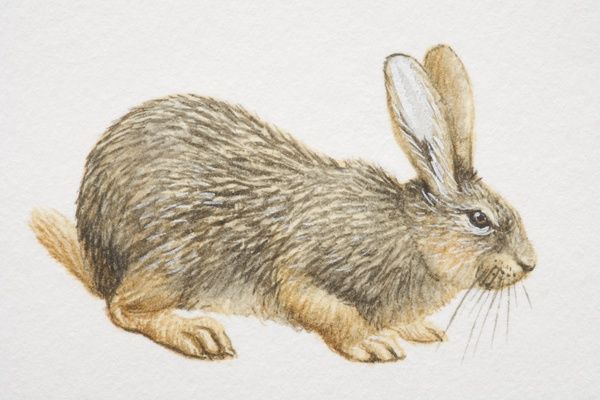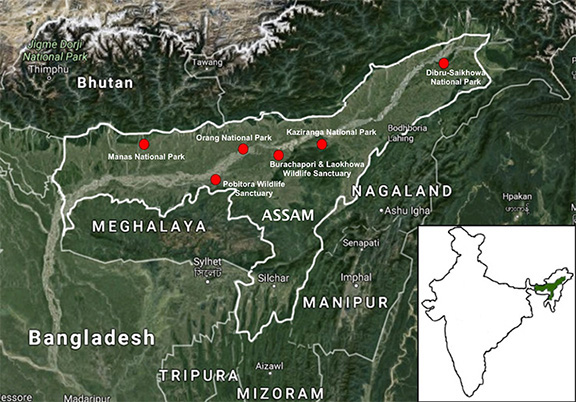Biodiversity & Environment
Barnadi Wildlife Sanctuary: Assam
- 29 Jun 2021
- 3 min read
Why in News
Recently, the World Wide Fund for Nature-India (WWF) found a few tigers inhabiting the Barnadi Wildlife Sanctuary in Assam.
- It is one of the smallest WS (Wildlife Sanctuary) of Assam and covers an area of 26.22 sq. km.
Key Points
- Location:
- Barnadi Wildlife Sanctuary (BWS) is located in northern Assam’s Baksa and Udalguri districts bordering Bhutan.
- The Sanctuary is bordered by the Barnadi river and Nalapara river to the west and east respectively.
- Legal Status:
- It was affirmed as the WS in 1980 by the Government of Assam.
- Barnadi was established specifically to protect the Pygmy Hog (Sus salvanius) and Hispid Hare (Caprolagus hispidus).
- Biodiversity:
- This is important for threatened species such as the Asian Elephant (Elephas maximus), Tiger (Panthera tigris) and Gaur Bos frontalis.
- About 60% of the BWS is reported to be grassland, most of it is now grassy woodland.
- The main Forest types are Tropical Moist Deciduous along the northern edge of the Sanctuary, and mixed scrub and grassland in the southern part with few trees.
- Vegetation:
- The vegetation has been drastically modified by human activity.
- Most of the natural vegetation has been cleared and replaced by commercial plantations of Bombax ceiba, Tectona grandis and Eucalyptus and by thatch grasses (mostly Saccharum, with some Phragmites and Themeda).
- Other Protected Areas in Assam:
- Dibru-Saikhowa National Park,
- Manas National Park,
- Nameri National Park,
- Rajiv Gandhi Orang National Park.
- Kaziranga National Park.
Hispid Hare/Assam Rabbit (Caprolagus hispidus)
- Habitat:

- Southern foothills of the central Himalayas.
- Occupies tracts of early successional tall grasslands, locally termed elephant grass. During the dry season, most grassy areas are subject to burning, and the rabbits take refuge in marshy areas or grasses adjacent to river banks that are not susceptible to burning.
- Threats:
- The habitat of hispid hares is highly fragmented due to increasing agriculture, flood control, and human development.
- Natural process of succession of grassland into woodlands reduces suitable habitat.
- Protection:
- CITES: Appendix I
- Schedule I of Wildlife Protection Act of 1972
- IUCN Red List: Endangered.







